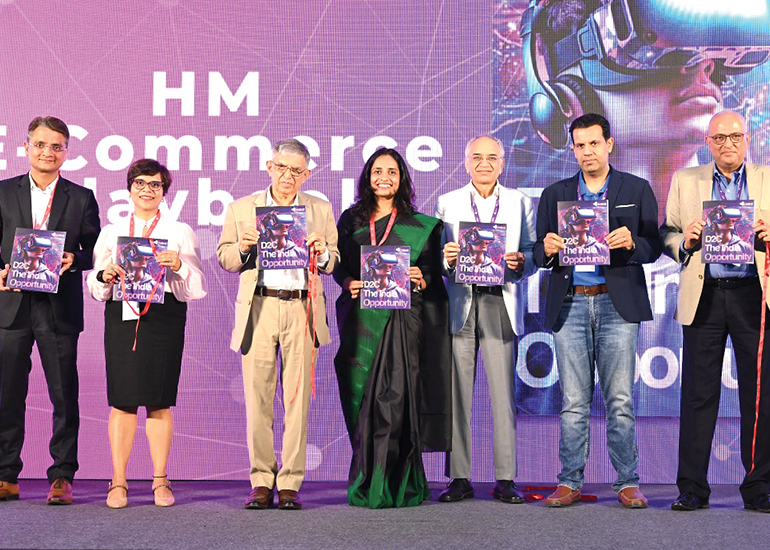 At a recent interview at the Economic Club of Washington DC, Jeff Bezos, now the world’s richest man owning 16% of the trillion-dollar valued Amazon, was asked by American financier and philanthropist David Rubenstein where he got the idea of selling books online. The answer Bezos gave was that he saw in the early 1990s that the Internet allowed universal access to books, a category where choice was cramped by physical availability because there were two million+ books in print circulation at a given time, whereas only at the biggest physical store possible, you couldn’t have more than say 1,00,000 to 1,30,000 titles. He then took Amazon into music, videos, electronics, toys, etc., based on this underlying logic.
At a recent interview at the Economic Club of Washington DC, Jeff Bezos, now the world’s richest man owning 16% of the trillion-dollar valued Amazon, was asked by American financier and philanthropist David Rubenstein where he got the idea of selling books online. The answer Bezos gave was that he saw in the early 1990s that the Internet allowed universal access to books, a category where choice was cramped by physical availability because there were two million+ books in print circulation at a given time, whereas only at the biggest physical store possible, you couldn’t have more than say 1,00,000 to 1,30,000 titles. He then took Amazon into music, videos, electronics, toys, etc., based on this underlying logic.This set me thinking. Amazon has beaten most of its competition with a simple philosophy, namely, endless choice at lower prices. However, this middle land of branded choices and an economic rationale driving buyer behaviour may be outliving its compelling lifetime of share gain.
The reason it ought to interest us all is that there is an underpinning of fundamental consumer psychology involved. For long, the e-commerce critics have said that it is nothing exceptional to have bumper sales revenues if you sell a dollar for 90 cents. Now, a time has come when the economic argument tilts the other way. We now argue why e-commerce can or may be challenged. Click and mortar may need a more basic value definition. Beyond choice. Beyond price and defined in terms of real value.
Fashion, fragrance, cosmetics, food are among several categories that are evolving to high levels of customization and, at the other extreme, also regressing to standardized ‘no choice’ commodity.
If the alternatives are ‘Only for me’ or ‘Pick any because all are the same’, then the very basis for choice mechanisms gets defeated as does the confusion that can accompany it. This undermines the platform-generic benefit of massive retailers like Amazon and Walmart.
Let us take a look at the customized or bespoke: From food to wine, hiking, news, machine gear and hundreds of diverse categories, there are now subscription services that send members curated content or material which is relevant, prescreened and paid for. Nestle is reportedly testing a diet programme that collects blood samples from customers in Japan. From the DNA data, it sells them personalized teas and smoothies. Japan has the most varianted repertoire of beverages on this planet.
Botox and beyond, we know that application of cosmetics is shallow when compared to the specificity with which DNA science can prescribe the exact timing, quantum and method of cosmetic and nutraceutical interventions required.
For almost all service industries, from airlines to hotels to wedding planners – the degree of specificity depends on the exactitude of details provided. More we demand exclusivity, the less there is an element of optionality.
At the other end of the spectrum is the totally brand agnostic land of commoditised anonymity. What was once true of store brands in toilet paper, detergent, milk and other unbranded basics is now approaching gasoline/ utility standard across all categories of CPG and consumables. It does not matter what brand since everyone subscribes to the same standard. A minimum standard at a given price. A rather stark example of this molecular world of anonymity is a Silicon Valley start-up, that pours meal replacement shakes into uniform, unbranded bottles for geeks who are too busy to eat.
Interestingly, this has an implication on the concept of masstige which has deceptively maintained a veneer of choice. Frankly, these were not choices but permutations. One size fits all is not a fashion statement but a matter of getting the right snappy elastic bands!
Merchant giants like Amazon can aggregate data on an unimaginable scale and they’re coming in to take marketshare because processing that data helps their product development and sales strategy. However, this is more true for the staples and basics. As a promotion machine, they’re going to promote their own content. In style-conscious categories or outright high fashion, it may not be easy. Disruption is never impossible but is not easy here.
The consumer-brand conundrum is that fashion brands are not inherently value and e-commerce majors cannot rely on very sharply priced products alone. Surely, people will gravitate to and search for those but evolution upwards is what’s profitable.
The net takeaway is that brands cannot act as price or convenience challengers to e-commerce marketplaces. Instead, their path forward depends on expert curation, adding lifestyle expertise, developing community and relieving the burden of choice by becoming friends, philosophers and guides.
Shubhranshu Singh is a marketer, story-teller, brand-builder, columnist and business leader























